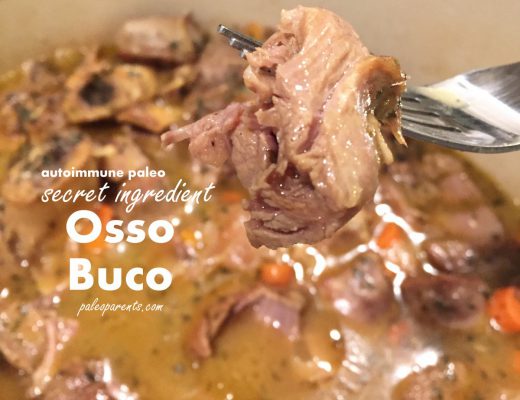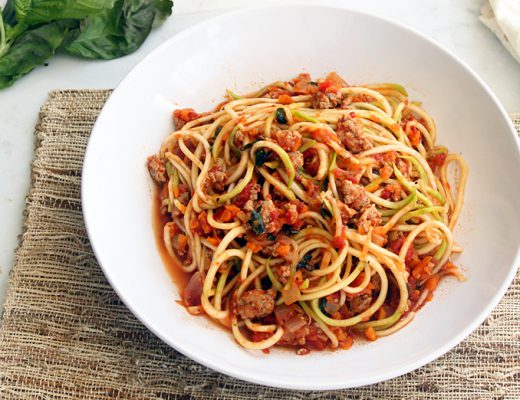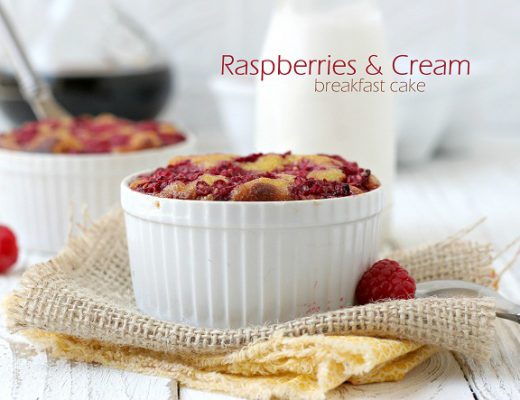Normally Wednesdays are our Guest Blogger Series day; but, there’s just so many new and wonderful Paleo and real-food bloggers out there that we’ve expanded our series to two days a week. We hope you enjoy the expanded view points and unique content; if so, we encourage you to show these guest bloggers your support by visiting their blog and social media links at the end of this post!
This week our guest is Jillian Teta of Fix You Digestion and Metabolic Effect. She’s answering a pressing question that Stacy had on Episode 24 of The Paleo View, “What should I be eating, considering my digestive and autoimmune issues, after working out?” Jillian answer this with the expertise of someone well versed in both medical science, digestion issues, and working out. Please note that while Sarah believes hemp protein would not be appropriate for the autoimmune protocol, it is certainly a much better choice for sufferers than whey, soy or egg white protein. We hope that this is an informative post that you will find applicable for your own life! Also, it’s the last post for “Blendtec Week” – don’t forget to enter the giveaway!

“What should I eat after a workout?” is one of the most common questions I hear as a healthcare provider and fitness expert. There is so much conflicting information out there, as any quick search on the internet will let you know, and if we add digestive disturbance into the mix, the issue can become even more confused.
It’s easy to under-appreciate the impact that exercise and food has on our hormonal signaling and the variety of effects it has on our ability to burn or store fat, and build or break down muscle. Yet depending on what combinations of food and exercise we choose, we are able to manipulate our physiology to achieve our ends.
After a good workout lifting weights, our body is in a unique state. When we lift weights and get to that place when our muscles are burning and we have to rest, we are elevating fat-burning hormones like human growth hormone (HGH), testosterone and adrenaline. During weight workouts, IL-10 is released, a powerful anti-inflammatory, pro-healing compound.* Our body is using blood sugar at a rapid rate to support the work of the muscles. As such, when we are finished training, our metabolism is very insulin sensitive.
*Note from Stacy, I had NO idea about this – still learning new things all the time! But, it does make complete sense, since I have experienced drastic improvement in my body’s response to autoimmune related flares since beginning to lift weights and CrossFit. Also, I have validated the insulin sensitivity and written about it here.
Insulin is a hormone whose job it is to act like a key that unlocks the doors of our cells to allow blood sugar, amino acids, fatty acids and nutrients into the cell to replenish and restore them. After a good workout, our cells are very eager to hear from insulin.
Cardiovascular exercise, like HIIT, steady-state or sprints will also leave us insulin sensitive, but not quite to the same extent as weight training will, and without the added benefit of HGH and testosterone. That is not to say that cardio is “worse”, but it is important to make the distinction between the two.

People that have GI disorders or compromise also have a unique opportunity to use post workout nutrition to further their healing for the simple reason that the cells of the body are more sensitive and able to import healing nutrients during this post-workout window.
When we consider post-workout nutrition, we first must have our goal in mind. Our goals will largely shape how we re-fuel our bodies after a workout.
Goal #1: Build muscle.
In this scenario, the 30 minute post-workout window is the most important. This is when you want to capitalize on the uniquely insulin-sensitive state that your body is in. The recommendation here is to eat protein and carbohydrates that are higher on the glycemic-index scale in a one-to-one ratio. For people with gut sensitivity, using easy to digest protein like hemp powder will be key. My favorite higher glycemic carbs to use are bananas and raw honey, both of which are highly soothing for the gut as well. Dates are also quite lovely. These “quick” carbs will spur a more rapid rise in insulin, which will unlock the cells and flood them with the excellent nutrition and healing compounds you are imparting on to them. Those looking to build muscle should do their best to avoid fats post-workout, as fat will blunt the absorption of other nutrients into the blood stream.

Try this:
Booming Banana Smoothie
- 1 1/2 scoops hemp or egg protein powder
- 1 banana (fresh or frozen)
- 8-10 oz water or unsweetened vanilla almond milk (you could also use the Paleo Parents favorite coconut milk!)
- ice
- 1/2 tsp vanilla extract (optional)
Combine all ingredients in a blender and blend to desired thickness (more ice will yield a thicker smoothie, as will frozen bananas). Drink within 30 minutes of a workout.
Honey-Vanilla Spice Smoothie
- 1 1/2 scoops hemp or egg protein powder
- 8 oz unsweetened vanilla almond milk (you could also use the Paleo Parents favorite coconut milk!)
- 1 heaping TB raw honey
- 1 tsp cinnamon
- dash nutmeg
- dash clove
- dash cardamom
- 1 tsp vanilla extract
- ice
Combine all ingredients in a blender and blend to desired thickness (more ice will yield a thicker smoothie). Drink within 30 minutes of a workout.
Whole foods option: Add 3 egg whites to your smoothie (save the yolks for later. Remember that fat will slow the absorption of other nutrients into your body)
Goal #2: Burn fat.
For those seeking to trim fat from their frame, higher glycemic index carbs are not as important and could potentially be detrimental. You want to avoid an insulin spike and focus on a slower rise. As such, it is more important to focus on carbohydrates that are lower on the glycemic index such as berries, coconut water, pumpkin and sweet potato. The one-to-one ratio of carbohydrates is not as important either, and in fat-loss seekers, going a touch higher protein/lower carb will yield the best results.
Try this:
Pumpkin Pie Smoothie
- 1 1/2 scoops hemp protein powder
- 1/2 cup canned organic pumpkin (can sub sweet potato)
- 1 tsp vanilla extract
- 1 tsp pumpkin pie spice, or to taste (can sub cinnamon)
- 8-10 oz water or unsweetened vanilla almond milk (you could also use the Paleo Parents favorite coconut milk!)
- ice
Combine all ingredients in a blender and blend to desired thickness (more ice will yield a thicker smoothie). Drink within 60 minutes of a workout.
Beautiful Blue Smoothie
- 1 1/2 scoops protein powder
- 1/2 cup frozen blueberries
- handful spinach (optional – don’t worry, it won’t change the taste and adds a nutritive boost!)
- 8 oz coconut water (can sub unsweetened almond milk or water)
- ice
Combine all ingredients in a blender and blend to desired thickness (more ice will yield a thicker smoothie). Drink within 60 minutes of a workout.

Goal #3: Get healthy/increase performance.
If you don’t life weights and just do endurance type exercise, I recommend you follow the guidelines under goal #2. Unless you are a marathon runner or a hardcore endurance athlete, “carbing up” with high glycemic carbohydrates post workout is not as important as refueling with good protein and lower-glycemic carbs, which will still replenish lost glycogen and feed the body.
For those looking to heal their gastrointestinal tract, I strongly recommend the addition of glutamine and branched chain amino acids to post-workout nutrition. Both are readily available and inexpensive. Glutamine is the preferential fuel for the cells that line the intestinal tract, helping them to heal and regenerate. BCAAs are a readily available, absorbable form of amino acids which can be rapidly taken up into the cells.
Consider adding a tablespoon of glutamine powder (about 3 grams) to your post-workout smoothie. It won’t change the taste, will help with recovery, is awesome for gut health and helps prevent delayed onset muscle soreness.
BCAAs are quite bitter and don’t mix well, so I recommend taking those separately. Five grams post workout and before bed will aid in healing, muscle building and the rebuilding of the GI tract.
Try this:
1 1/2 cups bone broth with gelatin, topped with a large handful of arugula or spinach. Bone broth is an extremely rich source of vitamins, minerals, amino acids, glutamine, collagen building blocks and other nourishing and gut-building nutrients. Combined with a handful of greens, this quick dish is powerhouse of healing compounds and will get your body refueled.
 Jillian Teta is a medically trained naturopathic doctor and a professional figure competitor. She is the creator of Fix Your Digestion, an online self-paced educational program that takes you through a gut restoration regimen step by step (http://fixyourdigestion.com/info/). She runs a blog by the same name (http://fixyourdigestion.com) and would love to connect with you on Facebook (https://www.facebook.com/FixYourDigestion) and Twitter @jillianteta. Dr. Teta is also a staff physician and team member of Metabolic Effect (http://blog.metaboliceffect.com) and JillFit (http://jillfit.com). She’s also publishing a book with Sterling Publishing, due out later this year. Jillian enjoys cooking and coming up with tasty Paleo creations and going for long walks with Keoni and their Great Dane, Rain.
Jillian Teta is a medically trained naturopathic doctor and a professional figure competitor. She is the creator of Fix Your Digestion, an online self-paced educational program that takes you through a gut restoration regimen step by step (http://fixyourdigestion.com/info/). She runs a blog by the same name (http://fixyourdigestion.com) and would love to connect with you on Facebook (https://www.facebook.com/FixYourDigestion) and Twitter @jillianteta. Dr. Teta is also a staff physician and team member of Metabolic Effect (http://blog.metaboliceffect.com) and JillFit (http://jillfit.com). She’s also publishing a book with Sterling Publishing, due out later this year. Jillian enjoys cooking and coming up with tasty Paleo creations and going for long walks with Keoni and their Great Dane, Rain.
Calling all Paleo people! We’ve been nominated for Best Family & Kid Blog over at The Kitchn. If you enjoy our blog, please click the link and vote for us! We’d LOVE your vote – it helps spread the general idea that paleo can be done with a family in a healthful way! Such an honor ♥




